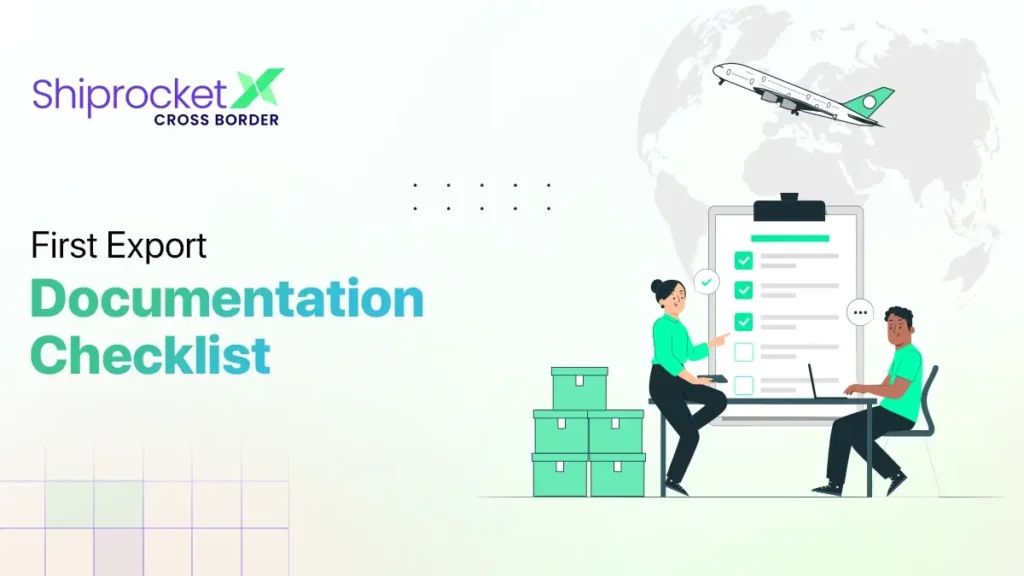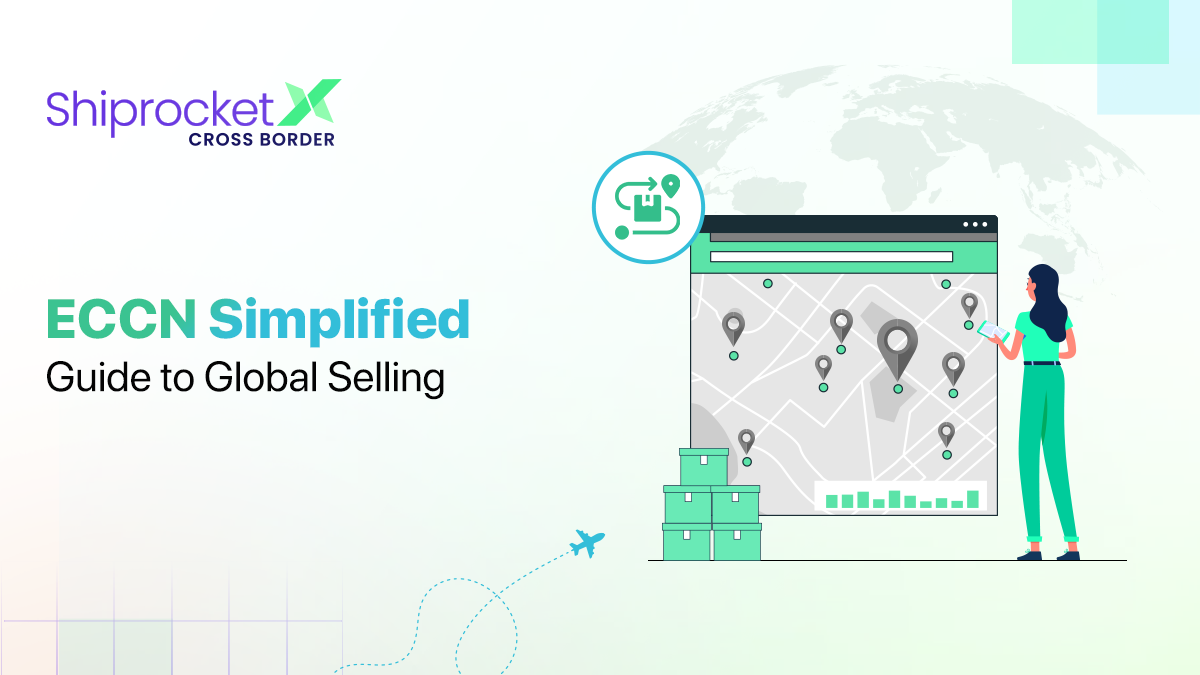Must-Have Export Documents for Indian Businesses
The Ministry of Commerce and Industry reported that the fiscal year 2023-24 had the highest monthly merchandise exports, reaching nearly US $ 41.68 billion in March 2024, marking the peak for that period.
If you’re an eCommerce business keen on tapping into the overseas markets, you’ll need to do these two things: get your products export-ready and have your export documents sorted.
Firstly, your goods must meet those quality and safety standards set by the import countries. Especially when it comes to food items, you’ve got to have proper packaging and stick to relevant food safety regulations.
Then, it’s paperwork time! All you need is to gather that comprehensive list of documents for the first-time export. Many papers are essential for almost any export, but depending on where you’re shipping to and what you’re shipping, the Department of Commerce may require some extra documentation from you.
India has big plans to broaden its export horizons beyond the usual products like iron ore and farm goods. Our country is setting its sights on making an impact in sectors like electronics, pharmaceuticals, engineering products, and processed foods. India is diversifying its export portfolio and bringing more variety to the global market.
Industry experts project the export figures to maintain the record levels achieved in the preceding fiscal year. The estimate for the fiscal year 2023-24 closed at US $776.68 billion, marginally surpassing US $776.40 billion from the previous financial year.
As a first-time exporter, you must learn what export documents you require for smooth international shipping and this blog is your roadmap for that.

Crucial Export Documentation for Initial Export Registration in India
Different countries have unique certification demands for various product types shipped abroad. These export documents have multiple purposes, like providing details about the goods and destination, enabling quality control inspections, and ensuring that you’re all squared away on the taxation front.
Checklist of the essential export documents often required in India for first-time export registration:
1. IEC
So, the first crucial export document you’ll need is the IEC, the Importer-Exporter Code. It’s a unique 10-digit ID number that the Directorate General of Foreign Trade (DGFT) allots to any business looking to get into import-export activities in India.
You can’t do any international trade without an IEC. This code is a must-have for passing through customs clearance and keeping track of all your cross-border transactions.
2. AD Code
The AD Code, known as dealer code, is a unique code assigned to Indian banks that have the authorisation and permission to conduct foreign exchange transactions.
Its main role is to facilitate foreign currency transactions related to imports and exports during the course of international trade. This AD Code allows banks to handle the most intricate financial aspects of cross-border trade.
3. Duty Drawback Registration
This process lets exporters get a refund on those pesky customs duties and taxes paid on imported goods, but only if those materials are subsequently exported.
You can secure a partial refund for the part of customs duties paid on imported materials that end up getting used in the production of exported products.
4. Port KYC Approval
Whether you’re a company or an individual entity, if you want to carry out international trade and port cargo handling, you’ll need a Port KYC (Know Your Customer) approval first.
This whole process is the port authorities and customs giving you the green light after making sure you’re legit and follow all the laws, rules, and regulations set by different destinations.
5. Inspection Report (If needed)
Some buyers like to do their homework, so they may ask for an inspection report from the importer or exporter.
The report enlists the outcome of an independent inspection or examination of the items, giving the details on quality, quantity, condition, and everything the buyer needs to know to make that purchase decision.
6. Commercial Invoice
This export document is a must-have one. The commercial invoice the seller gives to the buyer, lays out all the important details about the goods, like how much they’re worth, and the terms of the sale transaction.
7. Packing List
Think of the packing list as the ‘table of contents’ for all those boxes you’re shipping out. It describes the contents of every container or package, including weights and dimensions.
This export document is crucial while conducting international trade because it accurately states what the contents or items are and, hence, they can be handled accordingly during international transit.
8. Bill of Lading (B/L)
The bill of lading is like your ticket that lets those goods get on the transportation wagon. It’s an essential export document relating to the export-bound charges.
The carrier issues it to confirm they’ve received the goods from you in perfect shape and are ready to ship them out.
9. Export Order/Purchase Order
As you send that proforma invoice (basically a quote), if the buyer wants to make it official, they’ll give you an export or purchase order (PO).
This export document lays out all the key details they want from the buyer, like the pricing, currency, shipping information, and special requests for the goods.
10. Certificate of Origin (COO)
The COO is a certified export document that shows where those goods came from and where they were produced. It’s like a proof of origin for every item in the shipment and all the goods have a separate Certificate of Origin.
11. Shipping Bill
The shipping bill is where the exporter gives the buyer instructions on how to pay for those shipped goods. This export document outlines all the financial details of the export transaction and is critical to the international trade process.
12. Letter of Credit
This export document is like a safety net from the buyer’s bank. Their bank promises to pay the exporter by a certain date if the buyer flakes out on making the payment themselves.
Basically, with the Letter of Credit, the bank guarantees that the purchase order will be honoured.
13. Phytosanitary and Fumigation Certificates
For agricultural exports from India, you’ll likely need this export document. The phytosanitary certificate is more like an international quality proof showing that your crops or plant-based goods meet the standards. Authorities may also ask for a fumigation certificate in some cases.
14. Insurance Certificate
While not always mandatory, it’s a smart move to get an insurance certificate as evidence that your shipment was covered during that long journey to its destination.
It is a protective shield against any loss of or damage to your precious exported cargo.
Conclusion
The export documents you just went through are the paperwork required for export. These aren’t just some optional things – they’re the must-have essentials if you’re a first-time exporter looking to ship goods out of India.
Before you start packing up those containers, it’s necessary to check in with your local customs squad and the authorities in the destination country regarding the documents needed and the export/import regulations. Make sure you prepare all your export paperwork based on their requirements.
International trade regulations change constantly. So, It can be a lifesaver to bring in some experts to help you sail through the export process. A seasoned international shipping solution, like ShiprocketX, having that extra know-how can save you boatloads of headaches down the line. Such experienced international freight forwarders make sure your documentation is locked and loaded for smooth sailing.






